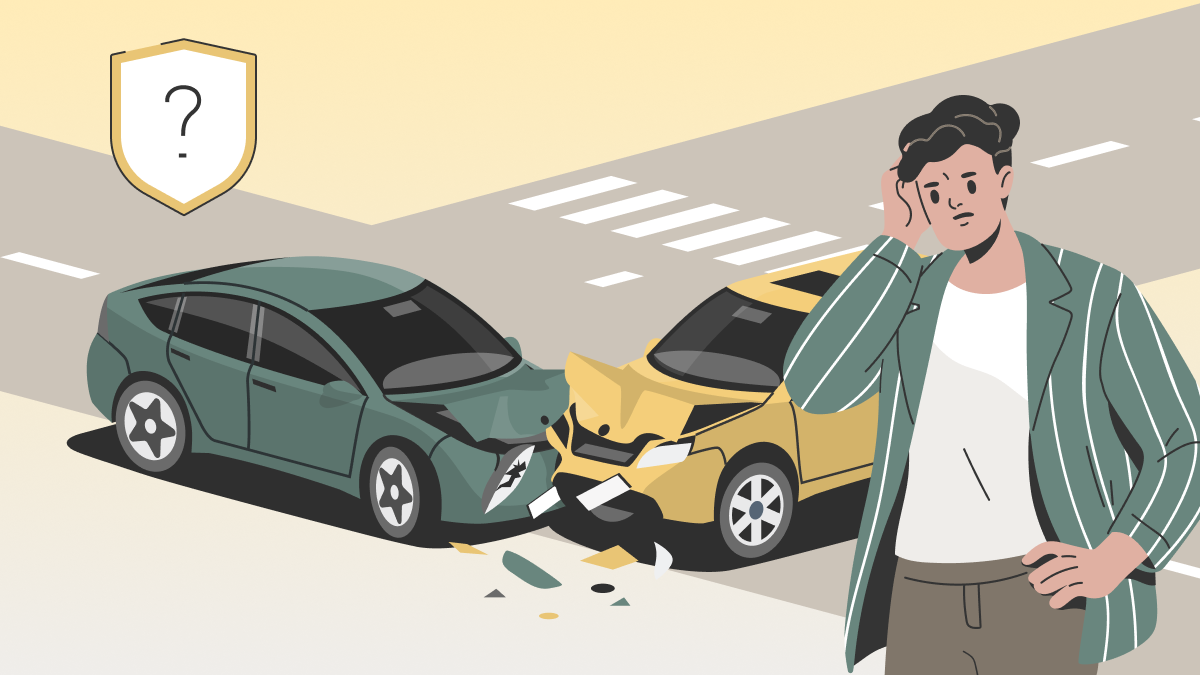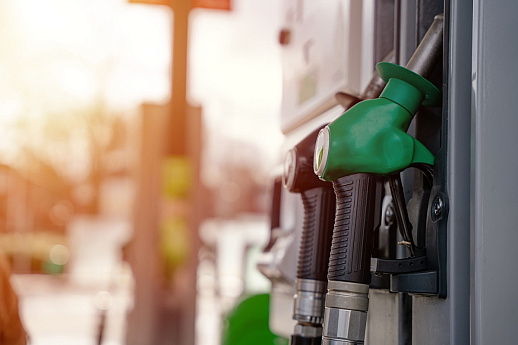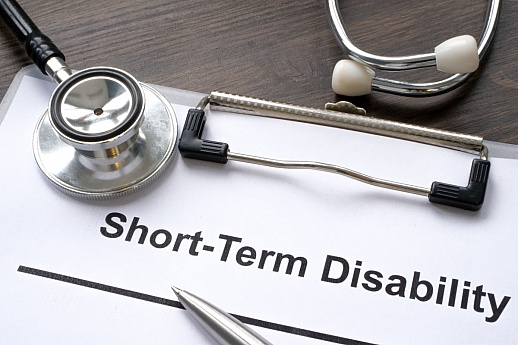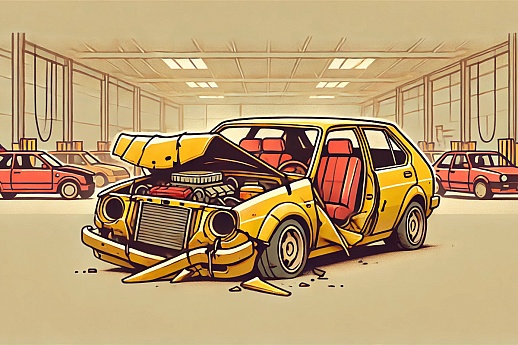When Should You Consider Dropping Collision Insurance?
It is surprising that over 75% of U.S. drivers have collision coverage. In many cases, drivers would be better off without this type of insurance coverage.
Dropping it could save you a significant chunk of change, depending on the value of your car compared to the cost of the coverage.
In this guide, we'll look at when dropping collision coverage makes the most sense.
What is Collision Insurance?
Collision coverage is a type of auto insurance that pays for repairs or replacement of your car if it is in an accident. This coverage differs from liability insurance, which covers damage to other vehicles or property that was damaged, not the policyholder’s own vehicle.

The basic idea behind collision insurance is to provide financial protection for your vehicle in the case of a collision, regardless of who is at fault.
When you choose collision coverage, you will typically be required to select a deductible, which is the amount you pay out of your own pocket for a claim before the insurance kicks in. These deductibles typically range between $250 and $1,000.
Is Collision Insurance Required by Law?
Despite its benefits, collision insurance is not required by law. Unlike liability insurance, which is required in almost every state, no state mandates the purchase of collision insurance as part of its minimum auto insurance requirements.
However, if you are leasing a car, the lender will likely require collision coverage. Lenders require this coverage to protect their investment until you've paid off the loan or ended the lease.
Once the vehicle is fully paid off, you can decide if collision insurance is worth it for your situation.
How Much Does Collision Coverage Cost?
The cost of collision insurance can vary. It is usually based on your:
- vehicle's value
- driving history
- deductible amount
- geographic location
The average cost of collision insurance is $300 a year, but premiums can often reach around a thousand dollars annually.
For instance, drivers who own newer or luxury vehicles tend to pay higher premiums due to the higher costs associated with repairing or replacing their cars. Similarly, individuals with a history of accidents or traffic violations may also see increased rates.
Additionally, where you live can affect your rates – urban areas with higher risks of accidents and theft usually have higher insurance costs than suburban areas.
Deciding When to Drop Collision Insurance: Factors to Consider
While collision insurance protects your vehicle in the event of an accident, car owners often wonder whether this type of coverage is worth it. Dropping collision coverage can lead to considerable cost savings. However, this decision should not be taken lightly, as it can expose you to financial risks.
Before deciding when to drop collision insurance from your auto insurance policy, carefully consider the following factors for your financial well-being:
- Age and Value of Your Vehicle: As a vehicle ages, its value depreciates. At a certain point, the cost of insuring the vehicle may not be worth it.
- Your Financial Situation: Assess your financial stability and ability to cover out-of-pocket expenses for repairs or a replacement vehicle if you were to remove collision coverage. If paying for significant repairs or replacing your vehicle without the cushion of insurance could strain your finances, keeping collision insurance might be a wiser decision.
- Risk Exposure: Frequent drivers, especially in high-traffic or accident-prone areas, face higher risks of collisions. If your daily commute involves navigating busy roads, maintaining collision insurance provides a layer of financial protection.
- Lender Requirements: If your vehicle is financed or leased, you likely won’t have a choice about collision coverage. Your lender may require you to keep collision insurance. Removing collision coverage could violate your loan or lease agreement, leading to penalties.
When to Remove Collision Coverage
Here is the main example of when dropping collision coverage makes the most sense:
If your vehicle's value is lower than it used to be, collision insurance might not be worth the cost.
The value of a vehicle is based on its actual cash value (ACV), which takes into account its age, mileage, condition, make and model, market demand, and accident history. When a car’s ACV is closely matching or just slightly above your collision insurance deductible, the coverage ends up being worthless.
For instance, if your car’s ACV is $1,000 and your deductible is also $1,000, filing a claim for a total loss would result in no payout.
When to Keep Collision Coverage?
Although saving money on insurance premiums is an attractive option, there are still plenty of reasons why it might be a good idea to keep your collision coverage. Here are a few scenarios in which you may want to hold on to this coverage:
Financial Planning
Most importantly, if your financial situation doesn't comfortably accommodate unexpected large expenses, such as paying for extensive vehicle repairs or outright replacement, collision coverage serves as a strong safeguard. The main cost-benefit analysis here revolves around the monthly premiums versus potential out-of-pocket costs.
While a minor repair might only cost a few hundred dollars, there's always the risk of extensive damage or a total loss, which would incur expensive repair or replacement costs. Maintaining collision coverage can ensure you're not blindsided by these expenses.
Substantial Vehicle Value
If your vehicle has a high market value, we suggest you keep its collision coverage, especially if it’s a luxury or newer model. These vehicles often require specialty parts and expert technicians for repairs, which can drive up repair or replacement costs significantly.
Collision insurance can protect your investment by ensuring that a significant asset remains protected without imposing large out-of-pocket expenses.
Deductible Feasibility
If you have chosen a lower deductible, the cost-effectiveness of keeping collision coverage increases. The lower your deductible, the less you will pay out-of-pocket in the event of an accident, making the insurance coverage even more valuable.
For example, let's consider a scenario where your vehicle sustains $3,000 in damage. If you have a $500 deductible, your out-of-pocket cost would be $500, with the insurance covering the remaining $2,500.
Regional Considerations
If you live in an area with high traffic density, frequent accidents, or severe weather conditions, the likelihood of being involved in an accident increases. In these regions, keeping collision coverage can provide significant peace of mind and financial protection against potentially common and costly incidents.
Lender Requirements for Leased/Financed Cars
If your vehicle is leased or financed, your lender will likely require you to maintain collision coverage. This ensures that their investment in the vehicle is protected in case of an accident. Failing to carry this coverage can result in penalties or breaches of your financing agreement.
Uninsured/Underinsured Driver Concerns
If there is a worry or possibility of getting hit by an uninsured or underinsured driver, collision coverage can be particularly important. This coverage will help pay for repairs or replacement of your vehicle, protecting you from the financial burden of accidents caused by drivers who lack sufficient insurance.
What to Do After Dropping Collision Insurance?
If you’ve made the decision to drop collision insurance for your vehicle, the following strategies can help you manage the risks associated with not having this preventative coverage:
Step 1: Maintain Your Emergency Fund
After dropping collision coverage, reassess and bolster your emergency fund to ensure you're prepared for potential out-of-pocket costs for car repairs or vehicle replacement in case of an accident. Repair costs can vary significantly based on the make and model of your car, especially for luxury vehicles.
Aim to save a specific amount each month or a percentage of your paycheck; for example, setting aside $100 to $200 monthly or 5% of your income can be effective. Automating these contributions can help maintain consistency. Keep this money in a high-yield savings account, which offers higher interest rates compared to regular savings accounts, allowing your funds to grow more quickly.
Step 2: Maintain Your Vehicle Regularly
Without collision coverage, the responsibility for any damage your car sustains falls entirely on you. Taking preventative measures through regular maintenance can help avoid costly accidents caused by brake, engine, and transmission failures or steering malfunctions. Follow your vehicle’s service schedule as outlined in the owner’s manual, typically every 5,000 to 7,500 miles.
Here are some specific maintenance tips:
- Brakes: Check brake pads and rotors every 10,000 miles. Signs of problems include squeaking, grinding, or a soft brake pedal. Regular maintenance involves replacing worn pads and ensuring brake fluid levels are adequate.
- Engine: Perform oil changes every 5,000 to 7,500 miles. Look out for warning signs like unusual noises, rough idling, or the check engine light. Regular maintenance includes changing the oil, replacing filters, and checking for leaks.
- Transmission: Check the transmission fluid every 30,000 miles. Symptoms of issues include difficulty shifting gears, slipping, or unusual noises. Maintenance involves fluid changes and ensuring proper fluid levels.
- Steering: Inspect the power steering fluid and system every 30,000 miles. Signs of problems include difficulty turning the wheel, squealing noises, or a vibrating steering wheel. Maintenance includes checking fluid levels and inspecting the steering components for wear and tear.
Step 3: Educate Yourself on Handling Minor Repairs
If you’re unfortunately involved in an accident with minor damages to your car, you might be able to fix it yourself. Learning some basic car repair skills can save you up to 85% of the costs of using professional services.
For instance, you can learn to perform minor cosmetic fixes such as scratch or dent removal. In addition to these, you can also learn to install headlights and taillights, fix minor bumper damage, touch-up painting for small scratches, and replace mirrors.
You can find tutorials on platforms like YouTube or enroll in a local community college's automotive repair courses.
Keep in mind that for safety reasons, it’s always a good idea to have a trained mechanic check and make sure you put the car back together properly.
Bottom Line
Knowing when to drop collision coverage is all about finding the balance between the risk of potential vehicle damage and the cost of insurance premiums. With some thought and careful planning, you can customize your auto insurance to meet your unique needs, making sure you have enough coverage without wasting money on what you don't need.
This way, you’re prepared for the unexpected without feeling like you're spending too much on premiums.
FAQ on When to Drop Collision Insurance
If you’re in a specific situation and are still asking yourself, do I need collision insurance, here are some frequently asked questions:
Should You Buy Collision Insurance if You Have a Good Driving Record?
Collision coverage could be more affordable if you have a good driving record. But the decision to get it depends on many of the factors we mentioned above: the value and make of your vehicle, your financial situation, and whether the car is new or leased.
Regardless of how good your driving record is, you could still be involved in a costly accident due to someone else’s negligent driving.
Do You Need Collision Coverage if You Live in a Rural Area?
Rural areas typically have lower traffic density and accident rates, but that doesn’t mean you won’t be in an accident. Keep in mind that collision coverage protects you from more than just accidents with other vehicles – it also covers damage from objects.
If you’re a risk-averse driver, keeping collision coverage would be a good preventative measure, even if you live in a rural area.
Do You Need Collision Insurance if You Rarely Drive Your Car?
Accidents can happen at any time, regardless of how careful or good of a driver you are. Driving less often can definitely lessen your chances of being in an accident, but it doesn’t mitigate it completely.
If you live in a high-traffic area that is prone to accidents, maintaining collision coverage is suggested, even if you don’t drive often.
Sources
iii.org. "Facts + Statistics: Auto insurance." Accessed May 17, 2024.
Investopedia.com. "Actual Cash Value (ACV): Definition, Example, Vs. Replacement" Accessed May 17, 2024.
Colburn Law. "How Can Vehicle Maintenance Help Avoid Accidents?" Accessed May 17, 2024.
TheStreet. "This is How You Can Save with That Car Repair." Accessed May 17, 2024.



